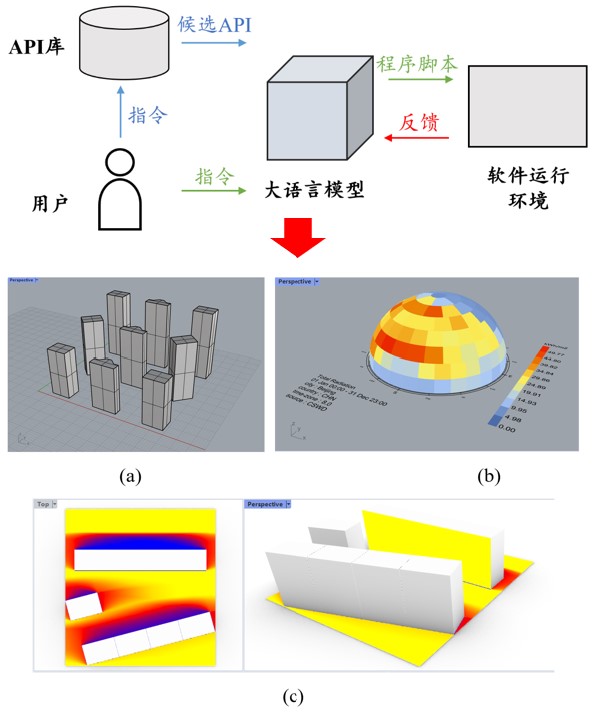A New Interaction Paradigm for Architectural Design Driven by Large Language Model: Proof of Concept with Rhino7
Journal of Graphics, 2024
Recommended citation: Jiang, C., Zheng, Z., Liang, X., Lin, J.R.*, Ma, Z., Lu, X.Z. (2024). A New Interaction Paradigm for Architectural Design Driven by Large Language Model: Proof of Concept with Rhino7. Journal of Graphics, 45(03), 594-600. doi:10.11996/JG.j.2095-302X.2024030594 https://link.cnki.net/urlid/10.1034.T.20240108.1355.004
Abstract
As society has higher requirements for the quality of architectural designs, the design software has become more professional and complicated. Current design software has not only high learning cost but also complex interaction modes. The recent breakthroughs in large language models (LLM) make computers clearly understanding instructions based on human’s natural language and accurately generating code possible, which is expected to provide new ideas for the paradigm of human interacting with software. Therefore, this study designed a new paradigm of interactive architectural design driven by LLM, i.e., changes from the architect interacting with the design software by multiple keyboard and mouse operations to LLMs writing scripts to call APIs according to architects’ instructions; the methodology is proposed and the possibility of it implementation on architecture design is validated. The methodology includes: ①LLM retrieves task-related APIs from the API set according to user instructions; ②LLM writes a program script based on instructions and the abstract of candidate APIs and runs it; ③LLM revises the script written based on the feedback from the environment, users, etc. To validate the capabilities of current LLMs carrying out the key steps of the methodology, multiple design tasks are completed with Rhino7 design software, GPT-4, and CodeLlaMa. The results not only show that the LLM-driven interactive design paradigm has initial prospects for implementation on architecture design, but also provide experiences and suggestions for the implementation. The implementation of the design paradigm can reduce the threshold and learning costs, and improve the efficiency in many scenarios; it is expected to play a key role in future architectural design software.

The authors are grateful for the financial support received from the National Natural Science Foundation of China (No. 52378306) and Research Project of Beijing Municipal Science & Technology Commission, Administrative Commission of Zhongguancun Science Park (No. 20220468132).

Leave a Comment